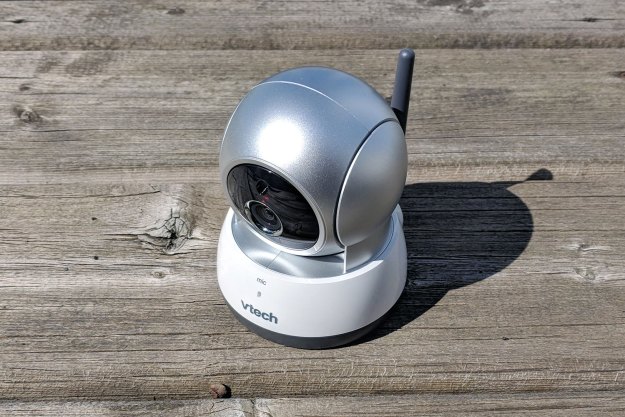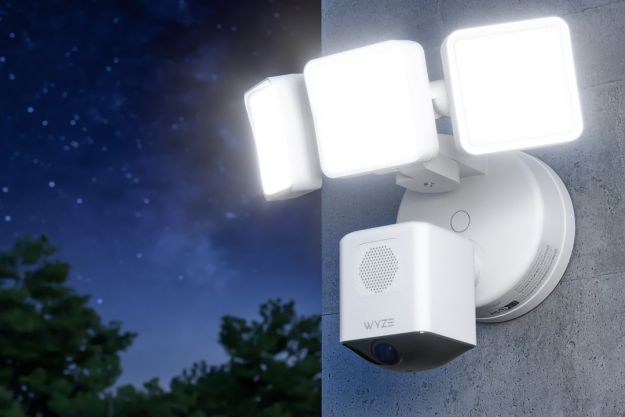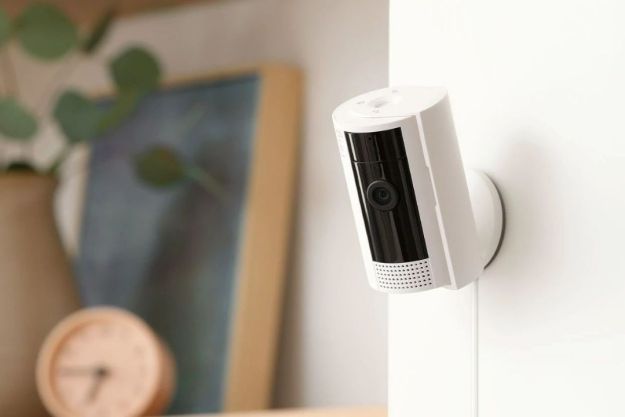
“While the pan and tilt is great, poor image quality makes the VTech HD Pan & Tilt Camera one to avoid.”
- Pan and tilt offers views around the room
- Responsive motion detection and alerts
- Local and cloud recording options
- Buggy, poorly designed setup experience
- 720p daytime image quality well behind the competition
- Murky and vague night vision
- Slightly shuddery live streaming video
- Made of cheap, toy-like plastics
Parents may be more familiar with VTech as an educational toy brand rather than a smart home security stalwart, but the company’s $120 HD Pan & Tilt Camera (VC931) is an attempt to shrug off previous security snafus and shift that perception.
While we’ve reviewed a phalanx of smart cams over the last few months, most have been static, relying on wide-angle lenses to maximize the field of view. As the name suggests, VTech’s camera is motorized, supporting pan and tilt movement for visibility around the room. VTech isn’t alone in offering this type of differentiation on a Wi-Fi camera, but they’re one of the more well-known brands doing so.
It’s certainly a plus point, as otherwise the camera’s specs lack luster. VTech labels the camera as “HD” but it’s the 720p variety that we’ve found to be unimpressive on devices such as Guardzilla 360. Elsewhere, the VTech boasts 10x digital zoom, night vision, motion alerts and two-way talk – all standard features, even on a $20 smart cam like WyzeCam 2 (which supports 1080p imaging).
So, is pan & tilt enough to make headway in a crowded marketplace? Let’s see.
Compact design with a cheap feel
Packaged with a wall mounting bracket, screws, wall anchors and an Ethernet cable, VTech has included everything you need to get up and running quickly. The hardware itself looks reasonably good, although cheap plastics make the device feel more like a toy than we’d like.

The rear 802.11n Wi-Fi antenna is mostly unobtrusive but adds a retro vibe that spoils the overall aesthetic. Sadly, it’s fixed to the camera and can’t be removed, even if you opt for the camera’s Ethernet connection – a handy option for wired homes. Other ports include a microSD card slot for local recording (maximum 32 GB capacity) and a 3.5mm audio out jack for connecting the camera to a speaker. A curious inclusion, but one designed to boost audio quality over the small, integrated speaker.
Frequent disconnections and show-stopping bugs
Camera setup and configuration is performed via the MyVTechCams smartphone app, available for Android and iOS devices. You’ll need to sign up for a VTech account during setup, but in return the company offers a free one-month trial of its cloud recording service ($3 per month), allowing you to review clips from the previous seven days. A top-tier plan, with 30-day recording history, is priced at $5 per month.
One of the worst setup experiences we’ve encountered in a long while.
We found setup to be an exercise in frustration. First, the app repeatedly complained of a connection failure on our test
We subsequently discovered that while we were initially encouraged to secure our VTech account with a password up to 20 characters long, a later step that required us to connect the camera to our account had a 12-character password limit. It’s the kind of poorly joined-up user experience that would typically see us returning a product as “unreviewable,” but we were able to change our password and managed to get it up and running. But let’s be clear: This was one of the worst setup experiences we’ve encountered in a long while.
Low quality imaging doesn’t make the grade
Once we finally had the camera configured, we could check out its performance. Daytime 720p image quality was better than we thought it would be, but was quite pixelated and lacked the sharpness and clarity we expect from a modern smart cam. Night vision imaging was unimpressive. Even at brightest settings, infrared illumination was well behind other cameras we’ve tested, and the resulting image quality was blocky and vague – barely acceptable.
The camera’s static field of view was much narrower than competitors, although that issue is alleviated by the pan and tilt feature, which works by swiping your finger on your
Images were pixelated and lacked the sharpness and clarity we expect from a modern smart cam.
Live streaming video wasn’t as smooth as we’d like, but the camera itself was reasonably responsive. We experienced just a couple seconds lag between live action and the camera feed, while motion detection alerts were accurate and quick, hitting the app’s UI almost immediately with a push notification following less than a minute later. We were particularly impressed to see that recorded clips were almost immediately available to view from the cloud.
As we typically find on all compact smart cameras, two-way talk is functional but rarely pleasant. Audio from VTech’s small integrated speaker is sufficiently loud but grating, while the microphone picks up audio well in even large rooms. One issue we did find is that live audio and video streaming can be out of sync, with audio playing in the app slightly ahead of the video stream.
Warranty information
The VTech HD Pan & Tilt Camera is sold with a 1-year warranty covering defects in parts and workmanship.
Our Take
While remote pan & tilt support is a handy feature on a smart home camera, 2018’s smart home camera market is packed with competition delivering top quality performance at budget prices. Lower quality day/night imaging and basic bugs in VTech’s setup experience add up to an unimpressive showing.
Is there a better alternative?
Yes. Unless you really need pan/tilt support, you can choose from an array of great 1080p smart cams with wide fields of vision at low prices. Bargain hunters should check out the $20 WyzeCam v2, which isn’t perfect but delivers an incredible bang for the buck. The $99 Canary View supports geo-fencing features and support for Amazon Alexa and the Google Assistant. Alternatively, the $149 Swann Smart Security Camera offers better image quality than VTech and can be used inside or outside the home.
How long will it last?
VTech is a reasonably large company and has issued firmware updates for the camera, so there’s certainly some hardware support available at the current time. However, given the seriousness of the account password bug we found during setup (that remains in the product despite considerable time post-launch) we are skeptical about how much focus exists on overall product quality.
Should you buy it?
Steer clear. While you may have to miss out on pan and tilt features, there are far better smart home cameras available on the market today – at this price point and below.
Editors' Recommendations
- Arlo Pro 5S vs. Ring Stick Up Cam Pro: Which is the best premium security camera?
- Ring is launching its first integrated pan-tilt security camera later this year
- Best security camera deals: Ring, Arlo, Blink and more on sale
- Google’s Nest Aware service is getting more expensive
- Google Home adds support for Nest Cam Indoor




